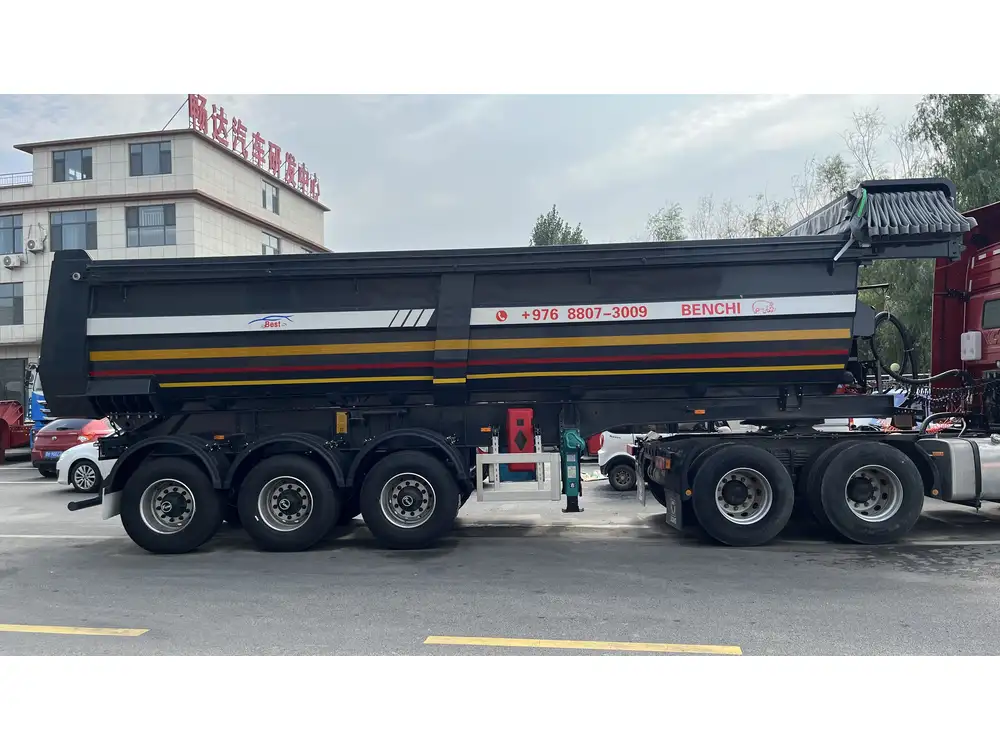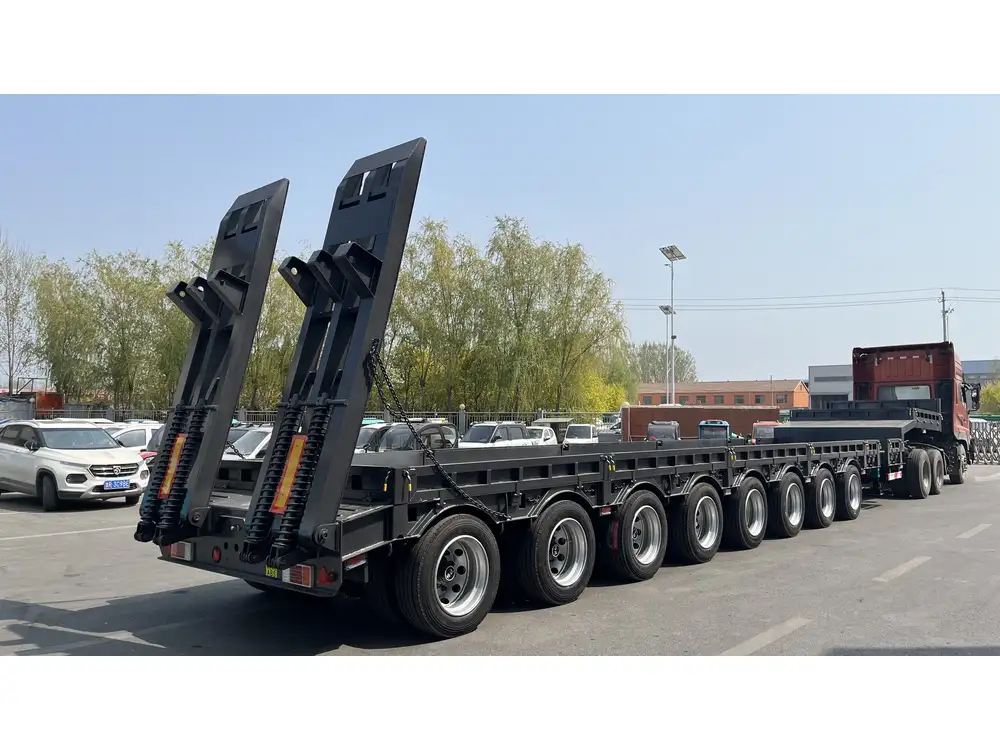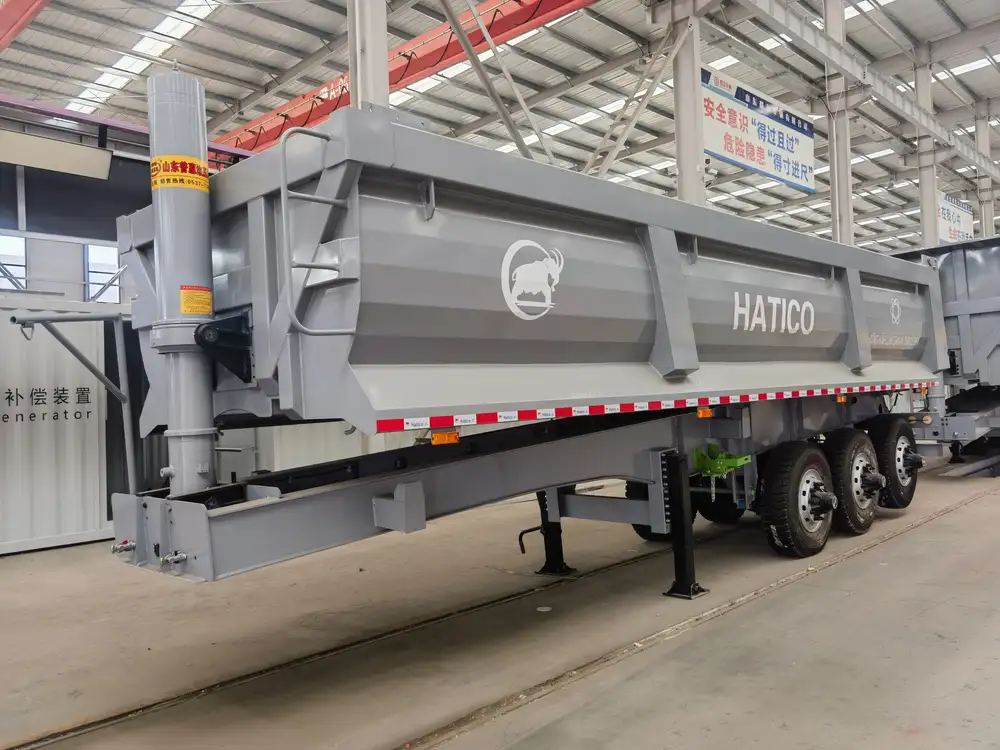When it comes to transporting heavy loads using flatbed trailers, understanding the optimal weight distribution is crucial not only for safety and compliance but also for the efficiency of transport operations. Improper loading can lead to numerous issues, including decreased stability, increased wear and tear on the trailer and vehicle, and potential traffic accidents. In this detailed guide, we will dissect the intricacies of load placement on flatbed trailers, delve into best practices, and explore the consequences of misdistribution of weight.
Understanding Weight Distribution
The Importance of Proper Weight Distribution
Distributing weight correctly on a flatbed trailer is not merely a matter of following regulations; it is about ensuring that you can transport your cargo safely and effectively. When the load is balanced, you enhance maneuverability, increase fuel efficiency, and minimize strain on the trailer and towing vehicle. This balance is influenced by several factors, including the total weight of the cargo, the hitch type, axle ratings, and the center of gravity.

Key Terms to Know
| Term | Definition |
|---|---|
| GVWR | Gross Vehicle Weight Rating; the maximum weight a vehicle can safely carry. |
| Payload Capacity | The maximum weight a trailer can safely carry excluding its own weight. |
| Center of Gravity | The point where the weight of an object is evenly distributed. |
| Axle Load | The amount of weight that is evenly distributed across each trailer axle. |
Guidelines for Weight Placement
1. Balance the Load
Even Distribution Across Axles: Place the majority of the cargo centered between the axles. This typically means keeping the weight about 60% towards the front of the trailer and 40% toward the rear, ensuring that too much weight does not rest on either the front or rear axle.
Use of Weight Scales: Regularly utilize weight scales to check the distribution of your cargo. This ensures compliance with weight regulations and improves safety.

2. Consider the Type of Cargo
Heavy Equipment: When loading heavy machinery, place it as close to the front of the trailer as possible while still allowing for proper clearance and securing mechanisms. This forward placement lowers the center of gravity and enhances stability.
Roll-off Containers: Ensure that the container is evenly distributed. Use rail systems or blocking mechanisms to stabilize any rolling or shifting behavior during transit.
3. Maintain a Low Center of Gravity
- Stability: Aim to keep the heavier items lower and centered on the trailer. Higher centers of gravity can lead to tipping, especially in turns or abrupt maneuvers.
4. Ensure Proper Axle Loading
- Regulatory Compliance: Check the payload limits for each axle. Ensure that you don’t exceed the maximum axle loads as specified by the manufacturer. Usually, the maximum weight per axle can range from 20,000 lbs to 34,000 lbs depending on configurations and tire types.
| Axle Type | Recommended Maximum Load |
|---|---|
| Single Axle | Up to 20,000 lbs |
| Tandem Axle | Up to 34,000 lbs |
| Tri-Axle | Up to 42,000 lbs |

5. Secure the Load Effectively
Strapping and Tie-Downs: Use high-quality straps and tie-downs to secure the entire load. Make sure that weight distribution does not compromise the integrity of the tire or tie-down system. The load should remain stationary even during sudden stops.
Utilize Side Rails for Enhanced Security: Flatbed trailers often come equipped with side rails which can assist in anchoring heavier items from shifting during transit.
Common Questions Related to Flatbed Weight Distribution
How Heavy Should My Cargo Be?
When loading a flatbed trailer, the weight of your cargo should be within the payload capacity defined for your specific model. It is vital to not only consider the total weight but also how the load is positioned. A well-balanced load keeps the truck trailer stable and compliant with legal regulations.

What Are the Risks of Overloading?
Overloading a flatbed trailer can lead to severe consequences, including:
- Increased braking distance and reduced control.
- Potential for tire blowouts leading to accidents.
- Penalties and fines from weight inspections.
- Damage to the towing vehicle’s suspension system.
How Does Weather Affect Weight Distribution?
Weather conditions can significantly impact how cargo behaves during transit. In adverse conditions (e.g., rain, snow, high winds), it is vital to ensure that cargo is both secure and evenly distributed to combat any potential shifting caused by wind or road conditions.
Troubleshooting Common Loading Issues

Shifting Cargo
Problem: Your cargo shifts during transit.
- Solution: Evaluate the tie-down methods; consider adding additional straps or using load bars to minimize movement.
Uneven Tire Wear
Problem: Notably uneven wear on one side of tires.
- Solution: Reassess weight distribution and adjust as necessary. Confirm that tires are inflated to the proper specifications, as low tires can contribute to imbalance.
Increased Fuel Consumption
Problem: Unusual increase in fuel consumption.
- Solution: Reexamine the load. Poor distribution can cause increased drag and resistance, which may result in a need for more fuel.

Advanced Techniques in Load Management
Utilize Technology
Leverage digital scales and onboard weighing systems that continuously monitor load limits during travel. These technologies can provide real-time feedback on weight distribution.
Invest in Expertise
Consider training staff on best loading practices and regular maintenance checks on flatbed trailers. Well-informed teams will better manage load placement, ensuring both safety and efficiency.

Create Visual Aids
Use diagrams and schematics to illustrate proper weight placement strategies. These visuals can assist workers in quickly grasping optimal load configurations.
Conclusion
In summary, the proper placement of weight on a flatbed trailer is a nuanced yet critical aspect of load management that directly impacts safety, efficiency, and regulatory compliance. By balancing the load, securing cargo effectively, and monitoring relevant conditions throughout transport, manufacturers, and haulers alike can minimize risks associated with improper loading. Understanding the key principles discussed, combined with continuous training and innovation in loading techniques, ensures not only the protection of assets and personnel but also promotes a culture of safety and efficiency in the logistics industry.
This comprehensive guide serves as a reference point for all users, ensuring that each trip undertaken is as safe and efficient as possible, no matter the load being carried. Exploring further, we invite you to apply these insights to everyday operations, leading to improved performance across all transportation endeavors.



